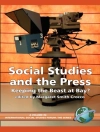‘This text provides students and instructors with a detailed examination of communication in the criminal justice system. Specific issues confronting criminal justice practitioners in their daily activities, including interactions with the public, are explored. The text demonstrates appropriate methods of communication and provides direction for overcoming difficulties in the communication process.’
—Brooke Miller, Ph D, University of North Texas
‘I would certainly describe this book as a must-have as an addition to any course that has a writing component. The information contained is necessary for students of criminology . . . [and] will aid students in formal writing as well as those going into the criminal justice field.’
—Dianne Berger-Hill, MAS, Old Dominion University
Effective Communication in Criminal Justice is the perfect companion for any criminal justice course that discusses communication and writing. Authors Robert E. Grubb and K. Virginia Hemby teach students how to be both effective writers and communicators—essential skills for anyone interested in criminal justice. Going beyond report writing, this book helps readers become more confident presenters and digital communicators while encouraging students to adapt their communication styles to meet the needs of diverse populations. Students will not only improve their communication and writing skills but also gain specific strategies for succeeding in careers related to policing, courts, corrections, and private security.
Daftar Isi
Preface
Acknowledgments
PART I: THE BASICS OF EFFECTIVE COMMUNICATION
Chapter 1: Communication: Words Are Not Enough
What Is Communication?
Communication Styles
Types of Communication
Flow of Communication
Barriers to Communication
Overcoming Communication Barriers
Communication Across Generations
Definitions and Characteristics of Generations
Internal Communication Across Generations
Barriers to Successful Communication Between and Among Generations
Addressing the Barriers and Meeting Generational Communication Needs
Baby Boomers in Law Enforcement and Criminal Justice
Generation Xers in Law Enforcement and Criminal Justice
The Millennial Generation in Law Enforcement and Criminal Justice
Leaders in Law Enforcement and Criminal Justice
Suggestions for Bridging the Communication Generation Gap With External Groups
Chapter 2: Think Before You Speak: The Verbal Component
Verbal Communication: The Oral Component
Listening
The Listening Process
Types of Ineffective Listeners
Barriers to Listening
Guidelines for Effective Listening
Criminal Justice Professionals and Verbal Communication
Responding
Verbal Communication: The Written Component
Writing Techniques: Choosing the Right Words
Developing and Writing Effective Sentences and Paragraphs
Law Enforcement Professionals and Verbal Communication Reporting
Testifying
Verbal Communication: The Video Component
Media Relations and Law Enforcement: The History
Law Enforcement Professionals: Responding to the Media
Chapter 3: Actions Speak Louder Than Words: Nonverbal Communication
The Functions of Nonverbal Communication
Kinesics: The Science of Body Language
Paralinguistics: The Voice
Proxemics: Space and Objects
Haptics: Touch
Interpreting Nonverbal Body Language in Criminal Justice Professions
Body Movements
Proxemics: Space and Objects
Facial Color
Facial Expressions
Paralanguage (The Voice)
Limitations and Exceptions to Nonverbal Communication
Checklist for Improving Your Nonverbal Communication
PART II: PREPARING FOR EFFECTIVE COMMUNICATION
Chapter 4: Grammar: A Lesson in the Basics
Parts of Speech
Nouns
Pronouns
Verbs
Adjectives and Adverbs
Prepositions
Conjunctions
Parts of the Sentence
Sentence Errors
Sentence Fragments, Run-On Sentences, and Parallel Structure
Punctuation
Period, Question Mark, and Exclamation Point
Comma
Semicolon
Colon
Frequently Confused Words Most Frequently Confused Words
Abbreviations Versus Full Words
Titles and Ranks
Degrees and Certifications
Time, Days, and Months
Acronyms and Familiar Initials
Address Abbreviations
State Abbreviations
Capitalization
Spelling Errors
Checklist for Improving Your Use of a Computer Spell-Checker
Fifty Most Commonly Misspelled Words
Chapter 5: Preparing to Speak: Presentations and Visual Aids
Purposes of Speeches
Impromptu Style
Extemporaneous Style
Manuscript Style
Memorized Style
Guidelines for an Effective Oral Presentation
Your Purpose
Your Audience or Listeners
Organizing Your Presentation
The Perception of the Speaker
The Speaker’s Voice
The Parts of an Oral Presentation or Speech
Using Visuals in Your Presentation
Types of Visual Aids
Designing Visual Aids
Points to Remember in Using Visual Aids Effectively
Overcoming Barriers to Effective Presentations
Checklist for Preparing and Organizing Oral Presentations
Getting Ready to Speak
Organizing the Introduction
Organizing the Body
Organizing the Conclusion
Designing Visual Aids
Developing Electronic Presentations
Prior to Your Presentation
The Presentation
Televised or Recorded Presentations (News Reports, Presentations, and Updates)
Nonverbal Messages
PART III: EFFECTIVE COMMUNICATION IN YOUR PROFESSIONAL SPHERE
Chapter 6: Written Communication: An Agency’s Lifeline
Writing Principles for Report Development
Words
Sentences
Paragraphs
Topic Sentences
Transitions
Consistency
Report Writing in Criminal Justice
Reports in Law Enforcement
Reports in Corrections
Reports in Private Security
Field Notes and Note Taking
Guidelines for the Note-Taking Process
Maintenance of Records: Field Notes, Reports, Interviews, and Evidence
Records Management Systems
Life Cycle of Records
Chapter 7: Interviewing and Interrogating: Witnesses and Suspects
The Interview Process
Interviewing
Interrogating
Preparing for an Interview or Interrogation
The Setting
Interview and Interrogation Questions
Legal Issues
Terminating the Interview or Interrogation
Chapter 8: The Court System: Preparing for and Testifying in Court
The Courtroom Setting
The Participants in the Criminal Courtroom Drama
Judge
Jury
Attorneys
Witness
Defendant
The Participants in the Civil Courtroom Drama
The Grand Jury
The Criminal Trial
The Law Enforcement Officer’s Role in the Trial Process Preparing to Testify
The Corrections Officer’s Role in the Trial Process
The Private Security Officer’s Role in the Trial Process
The Officer’s Appearance in Court Testifying
Chapter 9: Technology and Communication: A New Frontier
Technology and Today’s Criminal Justice Agency
The Intranet (Organizational Network)
Mobile Data Terminals (MDTs)
Department or Bureau Computers
Electronic Mail (E-Mail)
Texting
Technology in the Courtroom and in Corrections
New Technologies in the Courtroom
New Technologies in Corrections
Mobile Device Apps
Law Enforcement Apps
Corrections Apps
Private Security Apps
Social Media: Criminal Justice’s Newest Weapon
Writing for Social Media
Bulletin Boards
Listservs
Electronic Journals
Law Enforcement and the Internet
Cybercrime and Cybersecurity
Cybersecurity
Cybercrime
Chapter 10: Conflict Resolution and Other Special Forms of Communication
Conflict
Needs
Perceptions
Power
Values
Feelings and Emotions
Conflict Resolution Conflict Resolution in Criminal
Justice
The Negotiation Team
Hostage and Nonhostage Situations
Correctional Facilities and Hostage Situations
Hostage Negotiation Equipment
Communication: The Small-Group or Team Process
Small-Group Communication
Effective Small-Group Characteristics
Number of Members
Cohesion
Task Commitment
Group Rules
Group Consensus
Preparation
Role Requirements
Leadership Functions
Group Interaction
Limitations and Strengths of Small Groups
Limitations
Strengths
Cultures and Groups
Individualism
Individual Assertiveness
Equality
Progress and Change
Uncertainty and Risk
Informality
PART IV: EFFECTIVE COMMUNICATION WITH DIFFERENT POPULATIONS
Chapter 11: Communication With Diverse Populations: Ethnic/Cultural Groups and Children and Youth
Characteristics of Culture
Dimensions of Culture
Context
Time Orientation
Power Distance
Individualism Versus Collectivism
Communication Style
How We View Ourselves
Criminal Justice Agencies: Communicating With Diverse Groups
Law Enforcement and Immigrant Cultures
Law Enforcement and Minority Cultures
Enhancing Communication in Multicultural Communities
Children and Youth
Definition of Youth
Interviewing and Interrogating Juvenile Suspects
Interviewing Juvenile Victims and Witnesses
Gangs
Gang Awareness
Identification
Gang Recruitment of Youth
Early Involvement Signs
Signs of Actual Gang Membership
Communicating With Gang Members
Chapter 12: Communication With Special Groups: Cognitive, Physiological, Psychological, and Emotional Disabilities
Law Enforcement and the ADA
Corrections and the ADA Juvenile Justice
Private Security and the ADA
Categories, Definitions, and Explanations
Cognitive (Intellectual/Developmental) Disabilities
Physiological or Physical Disabilities
Psychological Disabilities
Interacting With People With Disabilities
Addressing the Individual and Not the Disability
First Steps
Guidelines for Writing About People With Disabilities
Service Dogs and Disabilities
Checklist for Interaction With
Individuals With Disabilities
Endnotes
Index
About the Authors
Tentang Penulis
Dr. K. Virginia Hemby, is a Certified Hospitality Educator (CHE) and a Certified Online Instructor (COI) and has taught Business Communication at the university level for the past 22 years. She worked as a legal secretary for 10 years prior to earning her doctorate. Dr. Hemby’s areas of specialization are Business Communication; Professional Meeting, Event, Exhibition, and Convention (MEEC) Management; Training and Development; and Office/Administrative Management. She is currently a professor of marketing at Middle Tennessee State University and Director of Raiders′ Closet, a nonprofit project established to provide professional attire to MTSU students′ in need to be used for interviews for post-graduation jobs. Students are allowed to keep any suit and accessories secured from Raiders′ Closet and at no cost to them. Dr. Hemby created Raiders′ Closet in 2012 in response to students′ comments that they were unable to afford to purchase suits to wear for interviews. She was honored by MTSU as the recipient of the 2016-2017 Public Service Award for her work with Raiders′ Closet.












